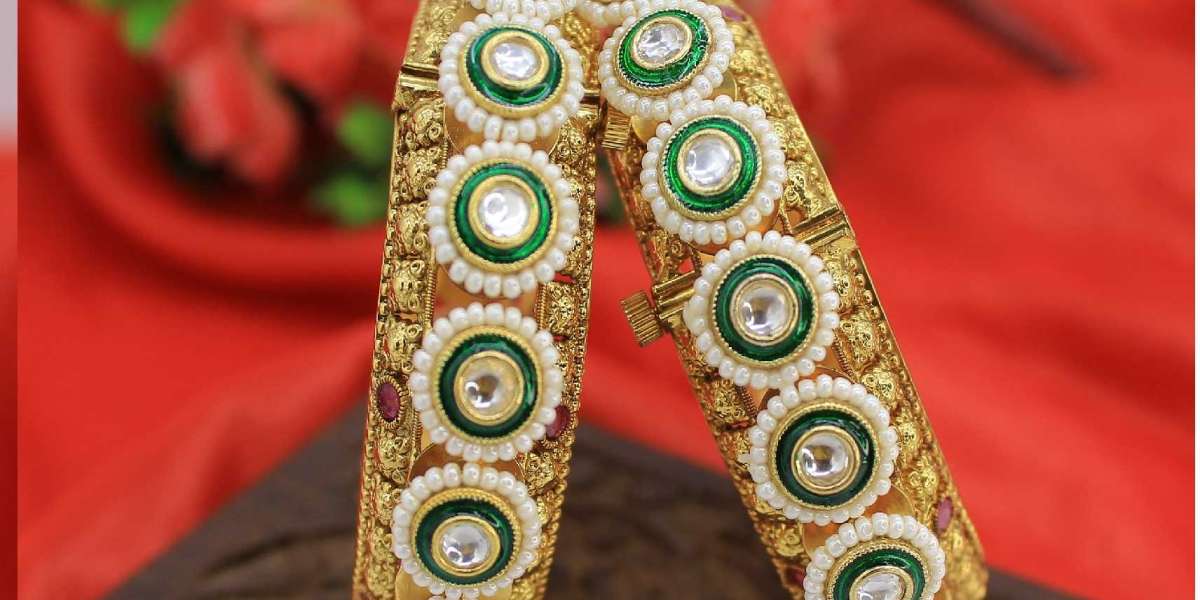The Shimmering Tale: Delving into the History and Evolution of Meenakari Jewellery
Meenakari jewellery, also known as enamelled jewellery, is an exquisite and intricate art form that has been cherished for centuries. Originating in the royal courts of Persia and subsequently flourishing in the rich cultural heritage of India, Meenakari jewellery has a storied history of craftsmanship and design. This article explores the journey of Meenakari jewellery, from its ancient roots to its contemporary relevance, highlighting the artistic techniques, cultural significance, and the evolution of this splendid art form.
Ancient Origins and Influence of Meenakari jewellery
The art of enamelling, which forms the basis of Meenakari jewellery, is believed to have originated in Persia during the Achaemenid Empire (circa 550–330 BCE). This ancient civilisation developed enamelling techniques on metal, glass, and pottery, which later spread across the Silk Road to India and other parts of the world.
The term “Meenakari” comes from the Persian word “Mina,” which refers to the brilliant hue of colours used in enamelling. When the art form arrived in India, it found patronage in the Mughal courts during the 16th century. Emperor Akbar was particularly fascinated by the beauty of Meenakari jewellery and actively promoted its production, leading to a flourishing of this art form in India.
The Technique of Meenakari jewellery
Meenakari jewellery involves a complex and intricate process that requires a high level of skill and precision. It is essentially the art of adding vividly colored enamel to metal surfaces, usually gold, silver, or copper. The process includes several steps:
Designing: Skilled artisans create intricate designs on metal surfaces, which serve as a base for the enamel work. These designs are drawn or etched onto the metal.
Engraving: The metal surface is then engraved to create grooves that hold the enamel in place. This also enhances the grip of the enamel on the metal.
Applying Enamel: The artisan carefully applies the powdered enamel of different colors into the engraved areas. The enamel powder is made by mixing various metal oxides to achieve the desired hues. Meenakari earring is the best example of this.
Firing: The piece is fired in a kiln at high temperatures, typically between 750 to 850 degrees Celsius. This process fuses the enamel to the metal, creating a glossy and durable surface.
Polishing and Finishing: After the firing, the piece is cooled and then polished to reveal the intricate designs and vibrant colors.
Cultural Significance
Meenakari jewellery holds immense cultural significance in India and other parts of the world where it is practiced. In India, it has deep ties to religious and cultural traditions. The art form found patronage in the courts of various rulers, including the Mughals and Rajputs, and became a symbol of royalty and opulence.
Meenakari jewellery is particularly cherished in Rajasthan, where it has been an integral part of the region’s artistic heritage for centuries. The state’s skilled artisans have mastered the art of Meenakari, passing down their knowledge from generation to generation.
Evolution and Adaptation
Over time, Meenakari jewellery has evolved to incorporate contemporary design sensibilities while preserving its traditional essence. Artisans have adapted the ancient techniques to create a wide range of jewellery pieces, from earrings and necklaces to Meenakari bangles and rings. Additionally, Meenakari work is not limited to traditional metals; it can be found on modern materials like brass and costume jewellery.
One significant development in the evolution of Meenakari jewellery is the fusion of styles. With influences from other cultures, the art form has diversified its designs and incorporated elements from Persian, Islamic, and European styles. This fusion has expanded its appeal and made Meenakari jewellery sought after not only in India but also across the globe.
Meenakari jewellery stands as a testament to the rich artistic heritage and craftsmanship of India. Its evolution from the Persian courts to the vibrant streets of Rajasthan has been a journey of creative adaptation and cultural significance. The intricate enamelling process and vivid colors continue to captivate jewellery enthusiasts worldwide, making Meenakari jewellery a timeless and cherished art form that beautifully blends the past with the present. As long as there are skilled artisans to preserve and evolve this ancient craft, Meenakari jewellery will remain a beacon of India’s artistic legacy for generations to come.








